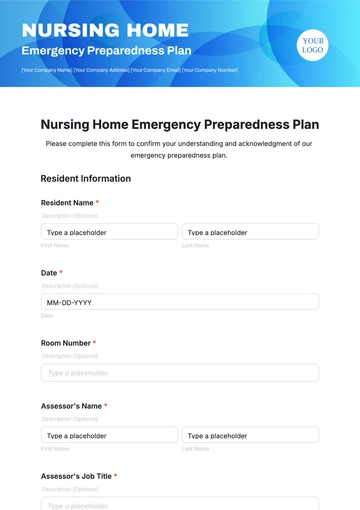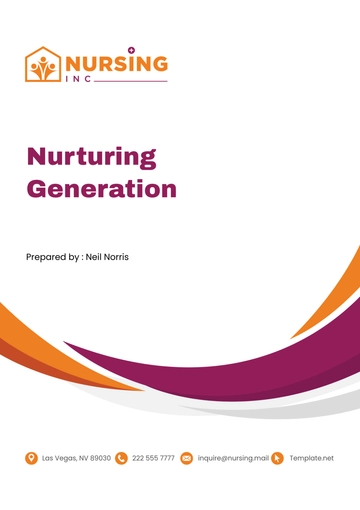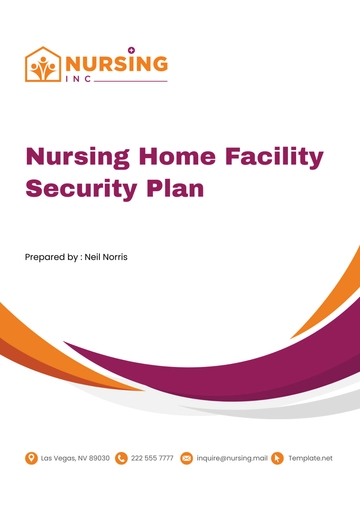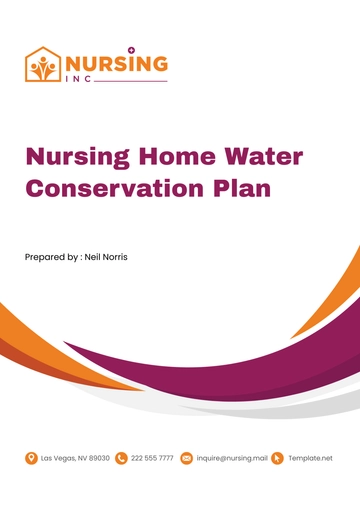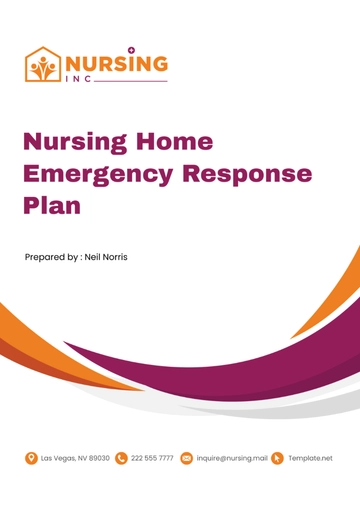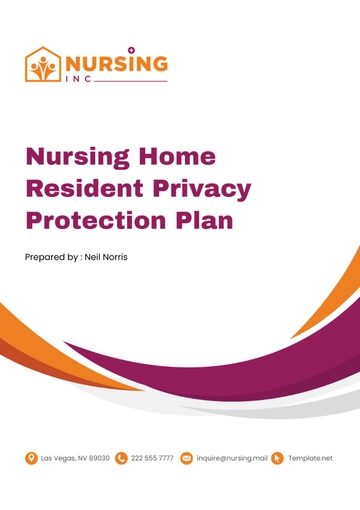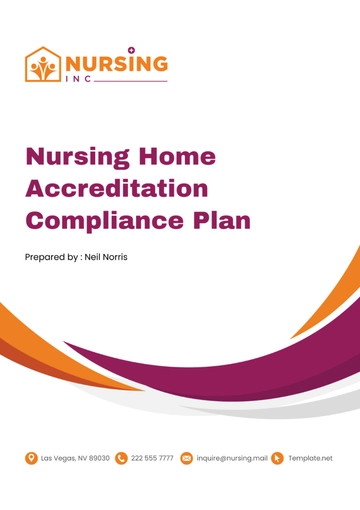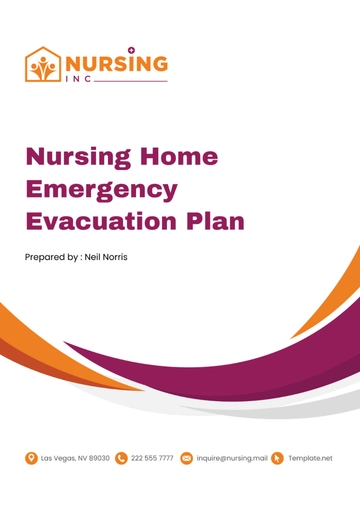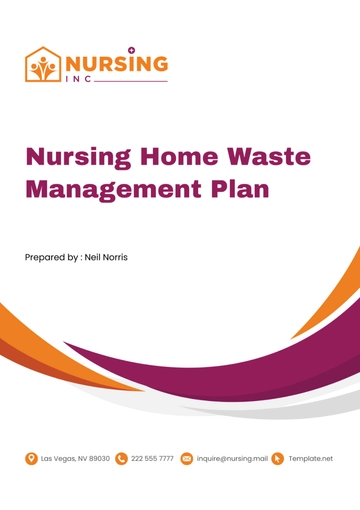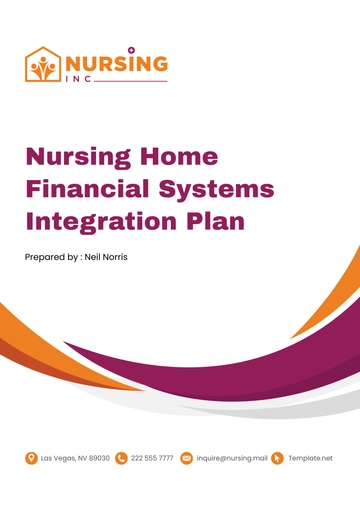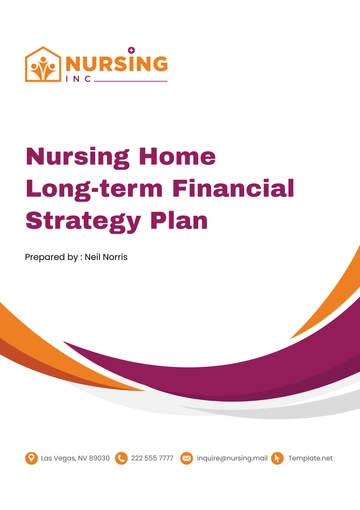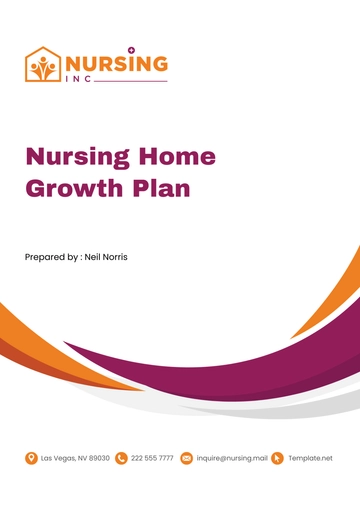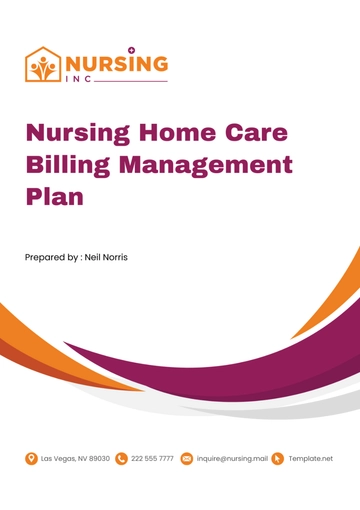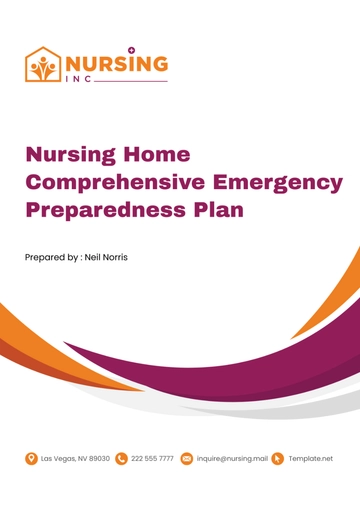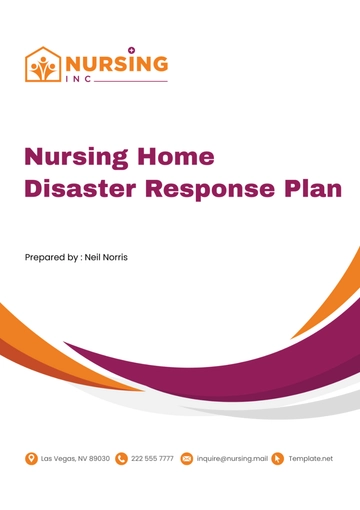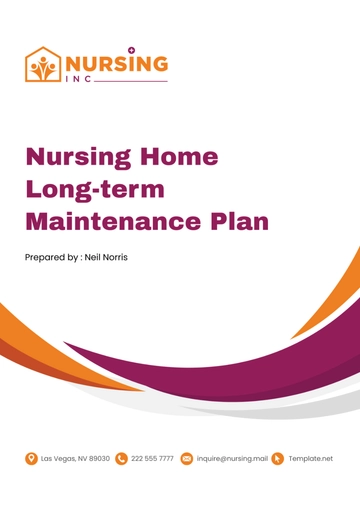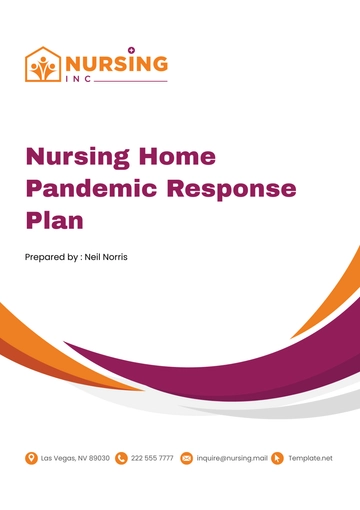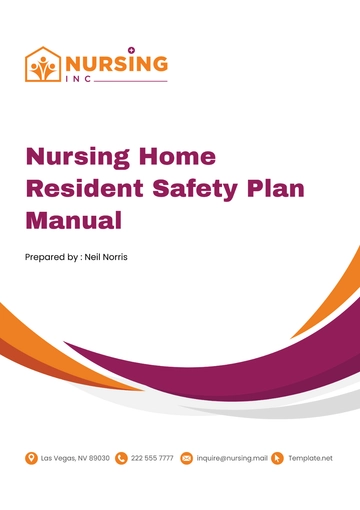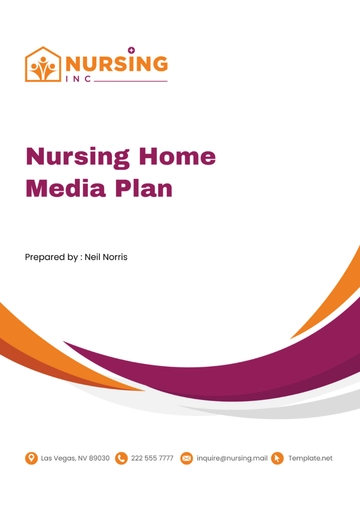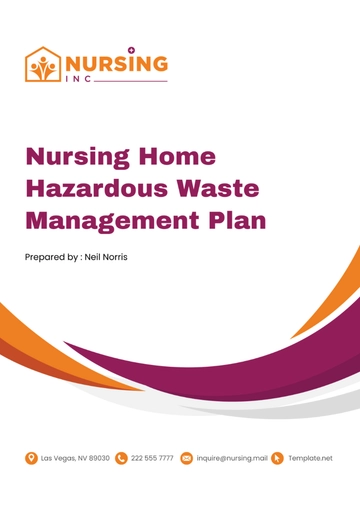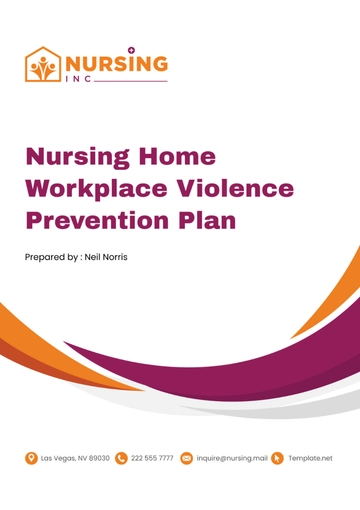Free Nursing Home Plan Of Correction

I. Introduction
Following our most recent regulatory inspection, we have identified several areas requiring immediate attention and corrective action. The purpose of this Plan of Correction (POC) is to outline the specific measures we are committed to implementing in order to address these deficiencies promptly and effectively. Our goal is to not only meet but exceed regulatory standards, ensuring the highest level of care and safety for our residents. This document serves as a roadmap for enhancing our operations and demonstrates our dedication to continuous improvement.
II. Identification of Deficiencies
The recent inspection has highlighted areas that need corrective actions. Below is a table summarizing each deficiency, the related regulatory standard or inspection findings, and the date each deficiency was identified.
Deficiency | Reference | Date Identified |
Inadequate staffing levels during night shift | CMS Requirements for Long-Term Care Facilities, §483.30 - Nursing Services | |
Improper storage of medication | CMS Requirements for Long-Term Care Facilities, §483.45 - Pharmacy Services | |
Insufficient fire safety drills | NFPA (National Fire Protection Association) 101: Life Safety Code, Chapter 19 - Existing Health Care Occupancies | |
Lack of proper resident nutrition plans | CMS Requirements for Long-Term Care Facilities, §483.60 - Food and Nutrition Services |
III. Analysis of Causes
A thorough analysis has been conducted to determine the root causes of each deficiency identified during the recent regulatory inspection. Understanding these underlying factors is crucial for developing effective corrective actions that not only address the immediate issues but also prevent their recurrence.
Inadequate Staffing Levels During Night Shift: The primary cause of this deficiency is attributed to a high turnover rate and difficulties in recruiting qualified nursing staff, particularly for the less desirable night shifts. Additionally, there was a lack of a systematic approach to staffing needs assessment, leading to instances where staffing levels fell below the necessary standards to ensure resident safety and care quality.
Improper Storage of Medication: This issue stemmed from inconsistencies in staff training regarding medication management protocols. The existing training program did not sufficiently cover the specific procedures for medication storage, leading to lapses in adherence to best practices. Furthermore, the physical layout of the storage area and the absence of regular audits contributed to this oversight.
Insufficient Fire Safety Drills: The deficiency in conducting adequate fire safety drills was primarily due to a misunderstanding of the regulatory requirements. There was a misinterpretation of the frequency and scope of drills required under the NFPA 101: Life Safety Code. Additionally, there was a lack of coordination between the nursing home administration and the local fire department to facilitate these drills.
Lack of Proper Resident Nutrition Plans: The root cause of inadequate resident nutrition plans was identified as a disconnect between the dietary staff and healthcare providers in assessing and updating individual resident needs. Limited access to specialized dietary consultation and insufficient integration of nutrition plans into overall care planning also contributed to this deficiency.
IV. Corrective Actions
A. Inadequate Staffing Levels During Night Shift
To address the identified deficiency in staffing levels during night shifts, we have developed a comprehensive plan to enhance recruitment efforts, improve staff retention, and implement a dynamic staffing assessment tool.
Specific Steps |
|
Responsible Personnel |
|
Resources Required |
|
Timeline |
|
B. Improper Storage of Medication
To rectify the improper storage of medication, we are instituting stricter compliance with medication management protocols and enhancing the training program for all relevant staff.
Specific Steps |
|
Responsible Personnel |
|
Resources Required |
|
Timeline |
|
C. Insufficient Fire Safety Drills
To ensure compliance with fire safety regulations and enhance our preparedness, we are overhauling our approach to conducting fire safety drills in collaboration with local fire services.
Specific Steps |
|
Responsible Personnel |
|
Resources Required |
|
Timeline |
|
D. Lack of Proper Resident Nutrition Plans
To improve the development and implementation of resident nutrition plans, we are enhancing the collaboration between dietary staff and healthcare providers and integrating specialized dietary consultations.
Specific Steps |
|
Responsible Personnel |
|
Resources Required |
|
Timeline |
|
V. Monitoring and Compliance
To ensure the effectiveness of the corrective actions implemented and maintain ongoing compliance with regulatory standards, we have established a robust monitoring and compliance framework. This framework involves regular audits, performance reviews, and the utilization of specific metrics to assess the success of the corrective actions and identify areas for further improvement.
Metric | Target Value |
Staffing levels during night shift | At least 95% compliance with required staffing levels |
Medication storage compliance | 100% compliance with storage protocols |
Completion of fire safety drills | At least 4 drills conducted annually |
Implementation of nutrition plans | 100% of residents with tailored nutrition plans |
VI. Training and Education
Recognizing the importance of staff training and education in preventing future deficiencies, we have developed targeted training programs to address the areas of concern identified in the Plan of Correction.
Program | Audience | Schedule |
Recruitment and Retention Strategies | HR Managers Nursing Supervisors | |
Medication Management Protocols | Pharmacy Staff Nursing Staff | |
Fire Safety and Emergency Preparedness | All Staff | |
Integrating Nutrition into Care Planning | Dietary Staff Healthcare Providers |
VII. Signatures and Approval
This Plan of Correction has been developed with the full knowledge and approval of our facility's leadership team. By signing below, we commit to implementing the outlined corrective actions, monitoring and compliance measures, and training and education programs. We also pledge to provide regular updates on our progress towards addressing the deficiencies identified.
Facility Administrator

[Name]
[Date]
Director of Nursing

[Name]
[Date]
Pharmacy Manager

[Name]
[Date]
Dietary Manager

[Name]
[Date]
- 100% Customizable, free editor
- Access 1 Million+ Templates, photo’s & graphics
- Download or share as a template
- Click and replace photos, graphics, text, backgrounds
- Resize, crop, AI write & more
- Access advanced editor
Discover the Nursing Home Plan of Correction Template from Template.net, your solution to addressing compliance and improvement needs efficiently. This editable and customizable template is a pivotal tool for swiftly creating plans that meet regulatory standards, ensuring a clear path to compliance. Modify it with ease using our AI Editor tool, making your plan specific to your facility's requirements.
You may also like
- Finance Plan
- Construction Plan
- Sales Plan
- Development Plan
- Career Plan
- Budget Plan
- HR Plan
- Education Plan
- Transition Plan
- Work Plan
- Training Plan
- Communication Plan
- Operation Plan
- Health And Safety Plan
- Strategy Plan
- Professional Development Plan
- Advertising Plan
- Risk Management Plan
- Restaurant Plan
- School Plan
- Nursing Home Patient Care Plan
- Nursing Care Plan
- Plan Event
- Startup Plan
- Social Media Plan
- Staffing Plan
- Annual Plan
- Content Plan
- Payment Plan
- Implementation Plan
- Hotel Plan
- Workout Plan
- Accounting Plan
- Campaign Plan
- Essay Plan
- 30 60 90 Day Plan
- Research Plan
- Recruitment Plan
- 90 Day Plan
- Quarterly Plan
- Emergency Plan
- 5 Year Plan
- Gym Plan
- Personal Plan
- IT and Software Plan
- Treatment Plan
- Real Estate Plan
- Law Firm Plan
- Healthcare Plan
- Improvement Plan
- Media Plan
- 5 Year Business Plan
- Learning Plan
- Marketing Campaign Plan
- Travel Agency Plan
- Cleaning Services Plan
- Interior Design Plan
- Performance Plan
- PR Plan
- Birth Plan
- Life Plan
- SEO Plan
- Disaster Recovery Plan
- Continuity Plan
- Launch Plan
- Legal Plan
- Behavior Plan
- Performance Improvement Plan
- Salon Plan
- Security Plan
- Security Management Plan
- Employee Development Plan
- Quality Plan
- Service Improvement Plan
- Growth Plan
- Incident Response Plan
- Basketball Plan
- Emergency Action Plan
- Product Launch Plan
- Spa Plan
- Employee Training Plan
- Data Analysis Plan
- Employee Action Plan
- Territory Plan
- Audit Plan
- Classroom Plan
- Activity Plan
- Parenting Plan
- Care Plan
- Project Execution Plan
- Exercise Plan
- Internship Plan
- Software Development Plan
- Continuous Improvement Plan
- Leave Plan
- 90 Day Sales Plan
- Advertising Agency Plan
- Employee Transition Plan
- Smart Action Plan
- Workplace Safety Plan
- Behavior Change Plan
- Contingency Plan
- Continuity of Operations Plan
- Health Plan
- Quality Control Plan
- Self Plan
- Sports Development Plan
- Change Management Plan
- Ecommerce Plan
- Personal Financial Plan
- Process Improvement Plan
- 30-60-90 Day Sales Plan
- Crisis Management Plan
- Engagement Plan
- Execution Plan
- Pandemic Plan
- Quality Assurance Plan
- Service Continuity Plan
- Agile Project Plan
- Fundraising Plan
- Job Transition Plan
- Asset Maintenance Plan
- Maintenance Plan
- Software Test Plan
- Staff Training and Development Plan
- 3 Year Plan
- Brand Activation Plan
- Release Plan
- Resource Plan
- Risk Mitigation Plan
- Teacher Plan
- 30 60 90 Day Plan for New Manager
- Food Safety Plan
- Food Truck Plan
- Hiring Plan
- Quality Management Plan
- Wellness Plan
- Behavior Intervention Plan
- Bonus Plan
- Investment Plan
- Maternity Leave Plan
- Pandemic Response Plan
- Succession Planning
- Coaching Plan
- Configuration Management Plan
- Remote Work Plan
- Self Care Plan
- Teaching Plan
- 100-Day Plan
- HACCP Plan
- Student Plan
- Sustainability Plan
- 30 60 90 Day Plan for Interview
- Access Plan
- Site Specific Safety Plan
